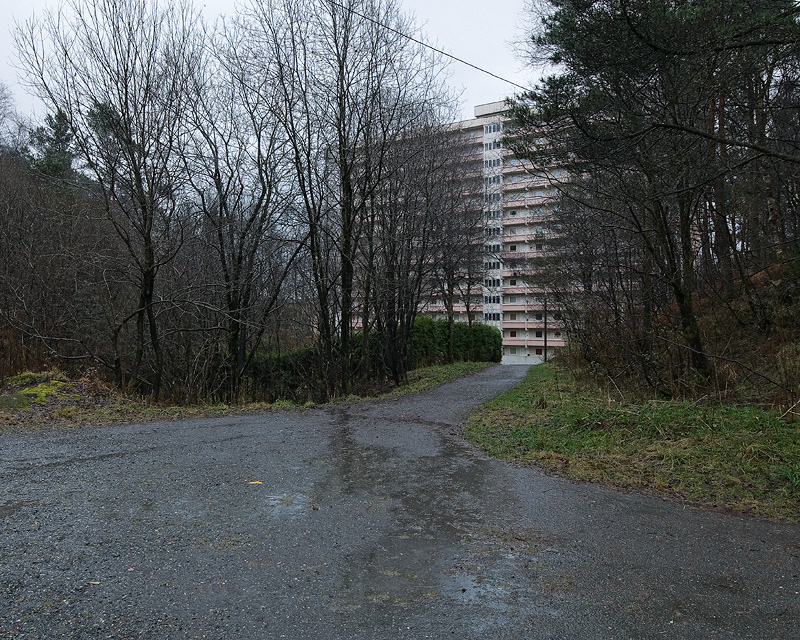Thorir Vidar: If I had to put a label on myself — and I’m not eager to — it would be landscape photographer.
One of my greatest interests about the subject of landscape is how we, humans, have gone about making it ours. Among other things how we’ve built our homes in it.
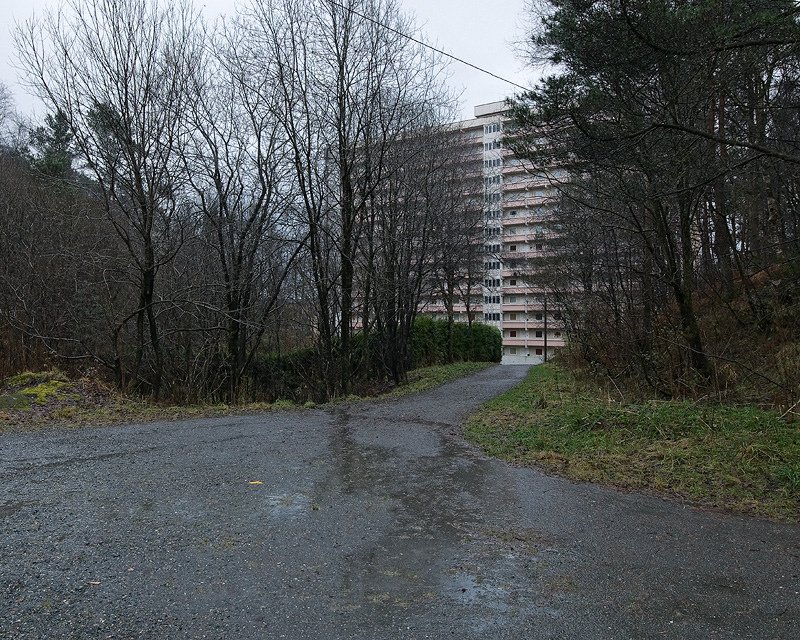
I remember I started following Thorir Vidar, a photographer born in Iceland, living and working in Bergen, Norway, after seeing some of his impressive and sometimes chilling photographs of apartment buildings.
Thorir: What do you find chilling about them?
Me: I’m referring to the emotional distance in your photographs, the absence of people. As if the world is rather impersonal, as if the buildings and things exist maybe not because of people but despite of them, as a separate society. A strange realisation: people being of no importance.
Thorir: I suppose I like to observe — not so much the people themselves, but the traces of people. To me these traces are very much about them, the people, not the fact that they are gone or missing, because they aren’t. I simply chose a moment when they weren’t present in the frame, but I think their presence is often quite strong nevertheless. Of course the photograph doesn’t describe a specific person, it is up to me (and eventually a viewer) to make my own association. Outside the experience of making or looking at a photograph. Or rather, in addition to the experience.
Me: Oftentimes your photographs seem to be about some non-space, or an in-between space, something that I am drawn to as a subject as well.
Thorir: We’re taught a great deal, from an early age throughout our lives through different channels; what’s important, positive, good, beautiful, and what isn’t, and to me it’s important to stop and question that from time to time (more like all the time). I have this need — and I think this applies to a great number of people — to find genuinely positive qualities in the desaturated. The mundane.
I often get the feeling that the relationship between nature and man is tainted by power struggle. Much more so than balance or harmony. That we, people, have the need to claim ourselves as the winner of a struggle, fight, to have complete control over every aspect of our lives and surroundings.
This struggle with nature is quite prevalent in Iceland, where I come from, where there is a continuous political war (I can’t not use this word to describe it) about to what degree the country should be turned into one giant hydro power plant. Somewhere within me there is a vast open space, uninhabited and untouched mostly and this space keeps pulling, always. It’s hard to describe, to put a finger on what exactly it consists of (and perhaps not necessary), but this is the root of my interest for landscape.
Another great interest of mine is homes. The endless stories that take place there, good and less good, colourful and grey–ish, some even darker, much darker.
Then, apartment buildings, especially the massive ones, bring a larger scale to the concept of homes, and multiply it somehow. The presence of people becomes even greater I think.
Me: From your photographs I also get the sense you are searching for something…
Thorir: Aren’t we all?
I often photograph subjects that genuinely interest me. Then I might find myself photographing something without an apparent reason, simply making a document of a certain time and place.
But often, when looking back at a project or photographs that I did perhaps years ago they reveal something to me that hadn’t even crossed my mind. As if the photographs are somehow answering questions I never thought of asking. In that sense the photo seems to have been something besides just a document of a certain time and place, which is probably the most valuable aspect of photography for me.
Me: Your series New Landscapes looks like you have not come to terms yet. What is it about? You wrote that you feel contempt looking at the “pile” that is New Landscapes. A feeling I am most familiar with myself, I love landscapes and have tried to shoot them in an original way as well, but struggling with themes and motives.
Thorir: New Landscapes is an example of not consciously knowing what I’m working with. The decision to work in this manner was a conscious one though, one I arrived at after putting quite a bit of energy into a series that had a much more rigid framework.
I understand better now what the images mean to me, than in the beginning, but I’m not quite there. Like other personal work, New Landscapes has come to a hiatus, it happened some time ago. I do hope that I will be able to continue working with the series because I think it holds some positive opportunities, but I’m afraid that the answers I have gotten so far point in a direction that would make it difficult, if not impossible, to pursue it further.
The initial motivation was something like “I’m sick of tying myself to predetermined concepts all the time so this time I’ll shoot whatever comes to mind. No questions asked. And see what happens”. Well, something happened. And for what it’s worth it has been really interesting.
Me: However you also wrote on your blog “[this feeling of contempt] is the first sign in a long time that I might be on to something vaguely important.”
Thorir: I didn’t mean vaguely important as being vague, but as the first genuine sign of importance at all. That this strong feeling for the work for the first time — in spite of it being this negative, or perhaps even because of it — was the first indication that there were some important issues involved. Nobody ever promised it would or should be easy, right?
Me: So, why do you photograph?
Thorir: There is something about photography that allows me to feel more grounded somehow, than I would be without it. Which to me feels problematic (and an indication that perhaps I’m not particularly grounded at all) as so much of photography’s nature is about the future and the past, and to a much lesser extent about the now. Then, I’m sure others have very different connections with this issue.
When photographing I work alone, attempting to establish a relationship between myself and the subject and reducing the number of potential distractions as much as possible. It’s about making sense of things, about — not seeing necessarily, but — feeling how subjects appear. Or, more accurately, seeing how it appears often offers an opportunity to better understand or sense the ingredients and their implications.
Me: Any major influences?
Thorir: I don’t look at much of other photographers’ work these days, mostly because I got bored with the constant stream of input. No, not bored but exhausted.
That said there are a few that have been a great influence, most of them since when I was studying. Robert Adams always resonates it seems, and I was (and still am) very intrigued by Lewis Baltz’ work, especially since the early to mid 70’s. These two (mostly, but along with a few others) were important influences regarding how I developed.
–
Some of the photographs I really love that we talked about:
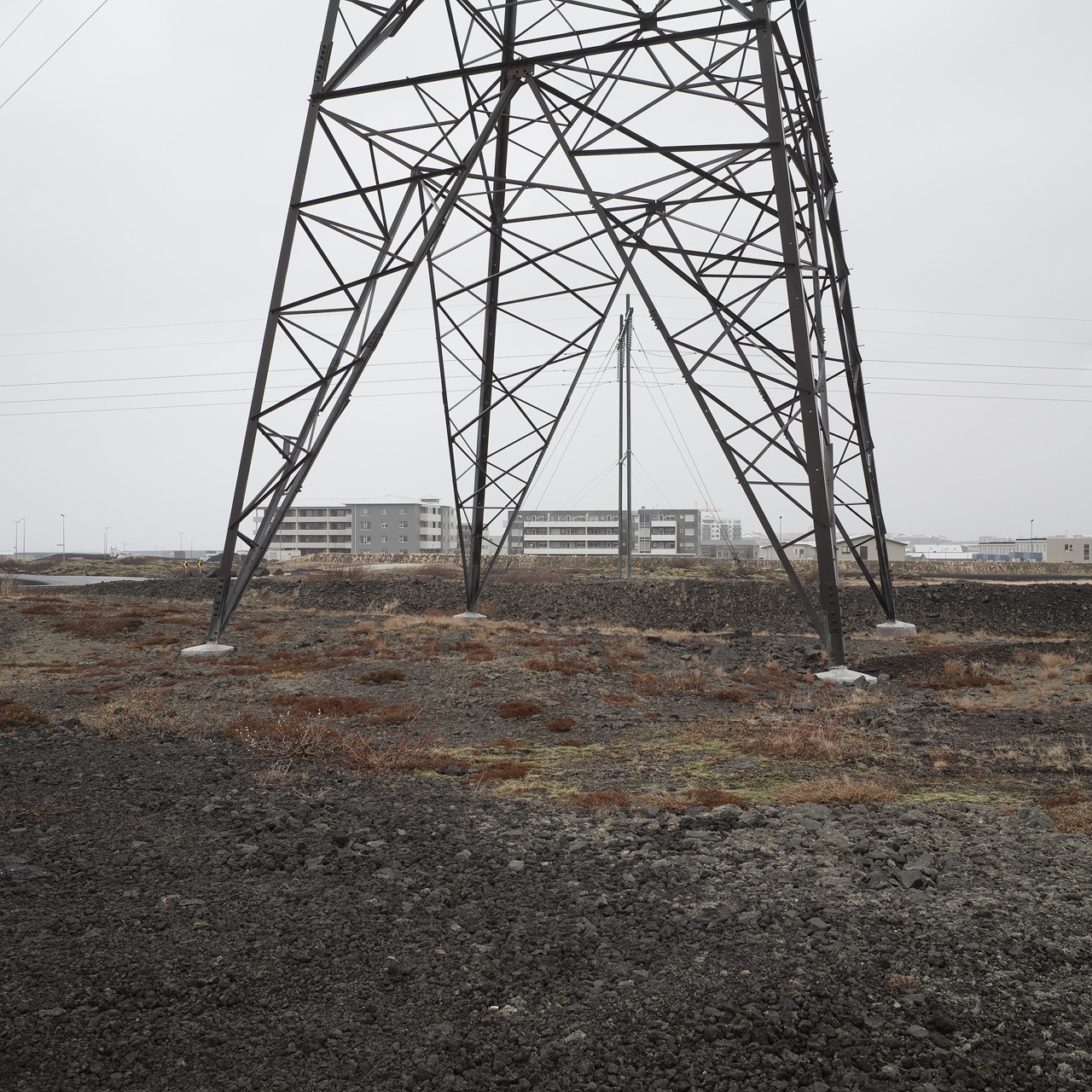
Thorir: This one, from Homes. A series I’m very fond of, but an image I struggle with. I find it predictable, too technical. Being able to pull it off was satisfying and all, but I’m not quite comfortable with the photograph.
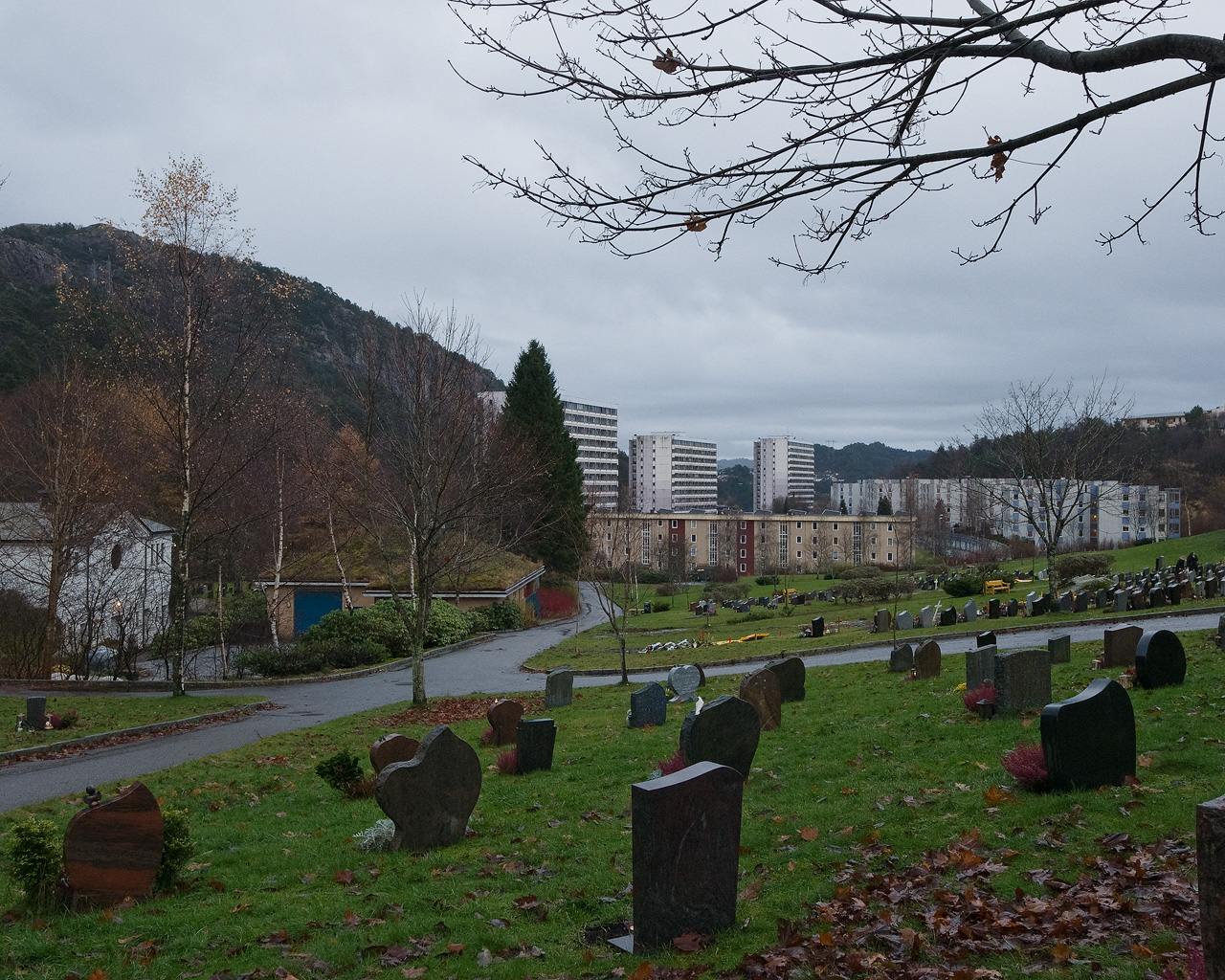
Thorir: Another series I’m quite fond of—if I can call it series, they’re all from the same afternoon walk—this particular image isn’t among my favorites though. But I find going back to this set interesting because not long after, a year or so I think, I began photographing quite differently. I see them as step on the way, so to speak.
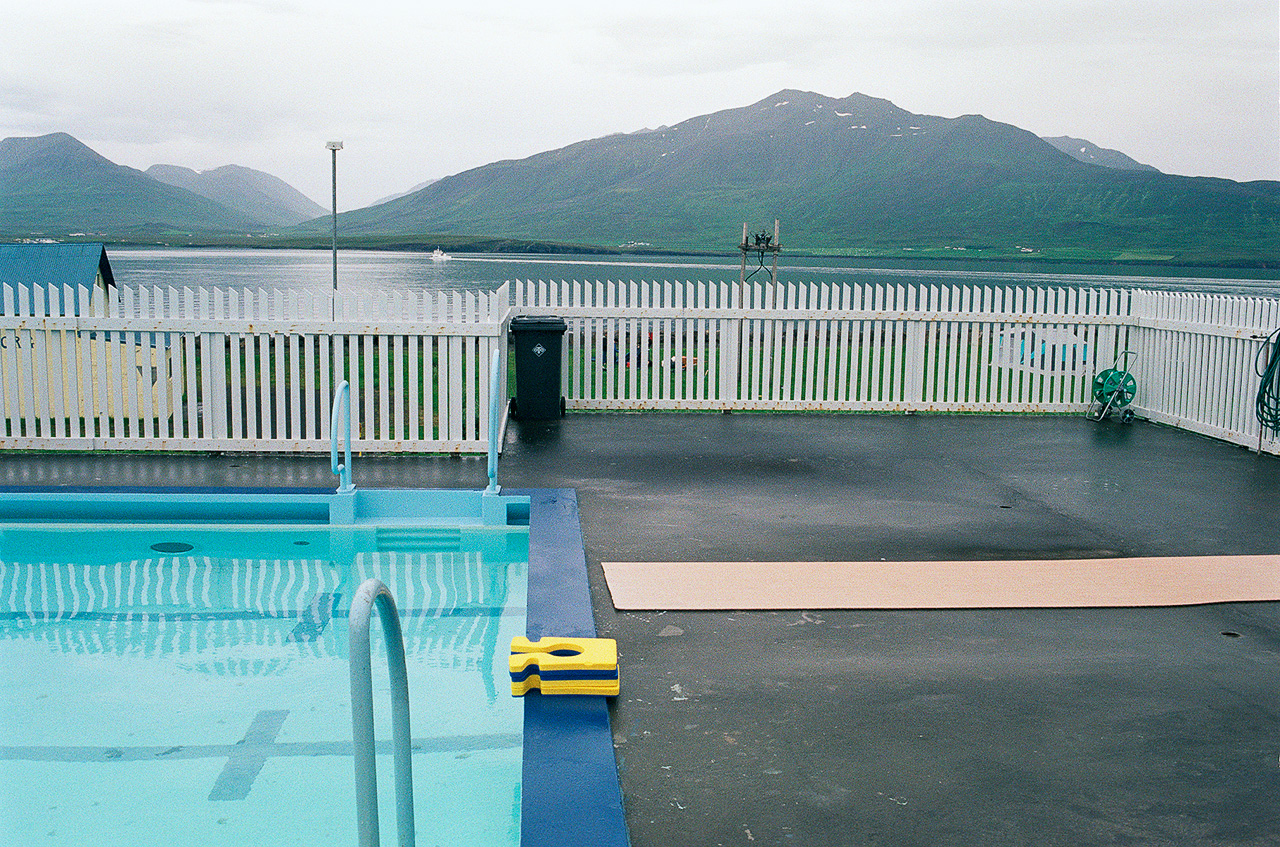
Thorir: Not sure what to say about this one, it has a very personal meaning for me yet I don’t find it,.. good enough. I made it in 2002 I think, and perhaps it’s only natural that the demands on my work have changed since then.
Me: Thank you so much for sharing Thorir, keep photographing.
Thorir: Thank you Joeri, for inviting me.
